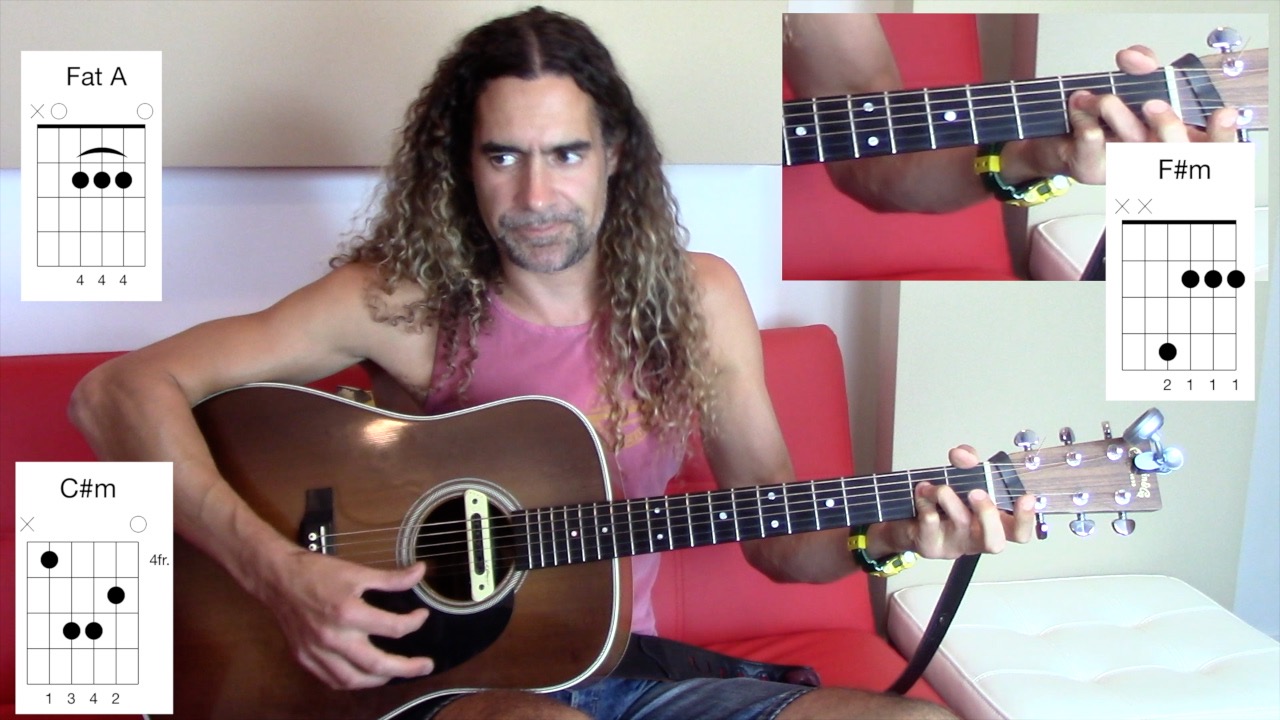I started a series of guitar lesson videos called ‘Guitar Lessons from Hell’. The purpose is to make guitar playing more accessible, by demonstrating some tricks and hacks that I regularly use. I have been playing electric and acoustic guitar for years, and have spent much of that time writing and performing songs. So, when I teach acoustic guitar, I teach from the perspective of singing a song whilst playing. If you’re new to guitar, this is one of the best ways of learning. Even if you can’t sing, just talking along will improve your timing and chord changes.
You’ll probably notice quite quickly that some chords are easier to play than others. If I’m trying out a new song, I’ll often use Ultimate Guitar as a quick reference, and do a sight read and play of the chords listed. In many cases, there are a bunch of barre chords, which cause problems for beginners. It’s great to know barre chords, but it’s also useful to know alternative ways to play some of them. Every time I learn a new song, I’ll always look for the easiest way to play it. I want to sing the best version of the song I can, and don’t want any obstacles in the way.
Also, with acoustic guitar, barre chords are just harder to play. It takes more pressure pushing down on the strings than with an electric guitar, due to string height and thickness. In line with that, I prefer to hear chords ringing out like they do in open positions on acoustic guitar. I'll usually work with a song, until I've found the best position on the neck using a capo, and I'm playing the most comfortable variation of any barre chords.
F#m
The first trick is for F#m. This uses the Em barre shape, and crops up in a lot of songs in the key of E. Instead of playing a full barre, you can use the top 4 strings instead. You lose a little bit of bass from the low E string, but in most cases, this isn’t a big deal. As long as the song you’re playing still sounds good! Use your 3rd finger on the 4th fret of the D string, then use your 1st finger on the 2nd fret of the top 3 strings. This works as a semi barre. If you really miss the bottom E string, you can curl your thumb around the fretboard, and cover the second fret of the low E string. This is trick that Hendrix used a lot.
C#m
To learn C#m, start off by playing a full C#m barre chord. Remove the 1st finger barre and leave the other fingers in place. Then fret the 4th position of the A string with your 1st finger. Play all the strings from the A string. The top E string is now open, and in tune with the chord. I use this variation all the time!
Fat A
I've always found the standard A chord hard to play using 3 fingers. So instead, I use my pinky to play a semi barre. The hardest part here is making sure the top E string is till played, as you won't be fretting it. With a bit of practice, this shouldn't be difficult. If I'm playing this one further up the fretboard using a capo, I'll often do a semi barre with my index finger instead.
You can watch a one minute example here, where I use all the chords in the Aerosmith song Cryin'.




